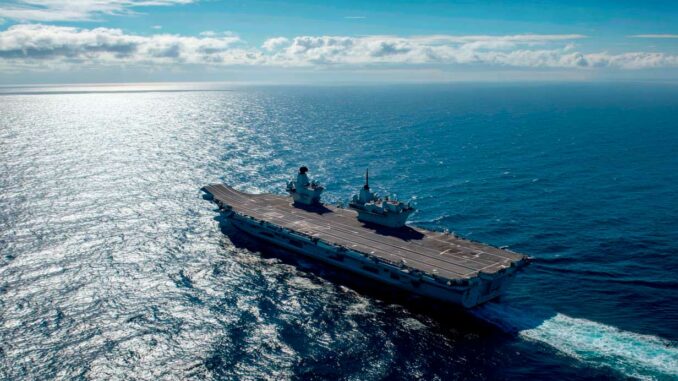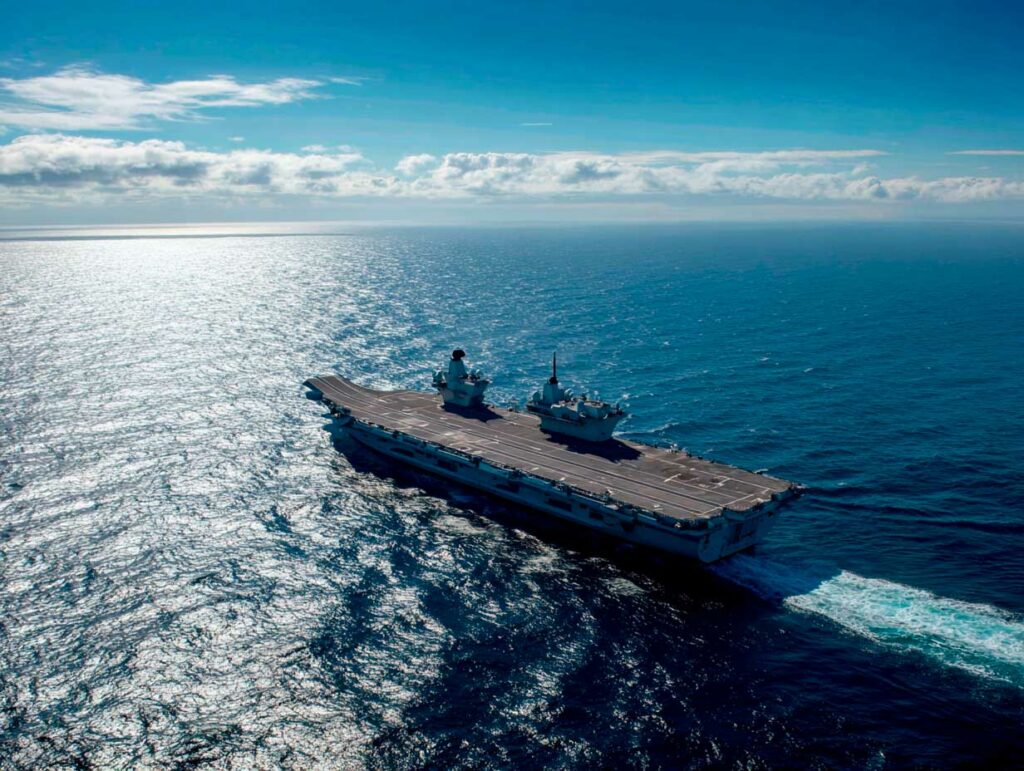
Project VANQUISH is launching an autonomous STOL drone demonstrator in the United Kingdom to strengthen the Royal Navy’s future Hybrid Air Wing by the end of 2026.
Summary
The UK Ministry of Defense (MoD) has published a preliminary contract notice under the name Project VANQUISH. The aim is to gather proposals from industry for a Fixed Wing Short Take Off and Landing Autonomous Collaborative Platform (FW STOL ACP), i.e. a collaborative fixed-wing drone capable of taking off and landing over short distances, compatible with British aircraft carriers. This demonstrator must be ready for sea trials by the end of 2026, with a margin of 18 months. The initiative is part of the Hybrid Air Wing strategy to complement F-35B fighter jets and Merlin helicopters with autonomous systems known as attritable, i.e., inexpensive and replaceable. The project responds to the need to strengthen the Royal Navy‘s projection and reconnaissance capabilities, while maintaining the UK’s competitiveness in Europe in the field of shipborne drones.
The strategic context of the British Hybrid Air Wing
Since the introduction of the F-35B Lightning II on Queen Elizabeth-class aircraft carriers, the Royal Navy has been rethinking its carrier-based naval aviation. The idea behind the Hybrid Air Wing is to combine manned aircraft, helicopters, and drones to increase the endurance and flexibility of the naval aviation group.
The two British aircraft carriers, the HMS Queen Elizabeth and the HMS Prince of Wales, are equipped with ski jumps and designed to accommodate short takeoff and vertical landing (STOVL) aircraft, mainly the F-35B. However, these aircraft remain expensive—more than €90 million each—and their availability is limited.
The MoD has therefore explored the use of autonomous platforms known as Tier 2 expendables, which are less expensive and can be deployed in large numbers. They are designed to carry out high-risk missions such as reconnaissance, electronic warfare, target designation, and light logistical support. These drones are intended to complement and protect the F-35Bs by allowing the fleet to operate on wider fronts without committing costly and vulnerable human resources.
The announcement of Project VANQUISH is part of this framework and reflects the global evolution of naval forces towards autonomous collaborative systems capable of networking with manned aircraft and executing semi-independent missions.
Project VANQUISH specifications
The MoD has published notice 2025/S 000-062294 to consult with industry. The document specifies that the project aims to demonstrate at sea an operational capability by the end of 2026, with a possible 18-month delay.
The future FW STOL ACP must be:
- Attritable, i.e., designed for low acquisition and operating costs, allowing for losses to be absorbed.
- STOL, capable of taking off over short distances compatible with ski-jump aircraft carriers, without catapults.
- Autonomous and collaborative, i.e., remotely piloted with the ability to operate in swarms and communicate in a network with other platforms.
- Operational at sea, resistant to maritime constraints (wind, corrosion, limited space).
The notice specifies that this is a technology demonstrator intended to inform future choices for the Hybrid Air Wing and that no decision on series production has yet been taken. The aim is to test the technical potential and reduce industrial risks before launching a larger program in the next decade.
Operational and budgetary motivations
The Royal Navy has identified several shortcomings in its current system. The F-35Bs offer high combat performance, but their acquisition and flight hour costs limit their use for secondary or routine missions. In addition, the number of aircraft available remains insufficient to guarantee a continuous presence on several fronts.
In addition, STOL drones would make it possible to:
- Extend maritime surveillance beyond the horizon without risking a fighter jet worth tens of millions of euros.
- Provide low-cost decoy targets or jamming platforms.
- Carry out limited logistical missions, such as transporting parts or light loads between ships.
- Reduce the burden on human crews and increase the number of sorties.
From a budgetary perspective, attrition is crucial. A drone of this type could cost less than 10% of the price of an F-35B, allowing dozens to be deployed aboard an aircraft carrier and losses to be accepted in the event of a high-intensity conflict.

Industrial and European positioning
Project VANQUISH puts the UK in the international competition for shipborne drones. The US is already testing similar systems such as the MQ-25 Stingray for aerial refueling and exploring collaborative concepts for future naval combat drones. France and Germany are investing in Loyal Wingman projects as part of the SCAF/FCAS, but without any immediate naval applications.
For British manufacturers, the project represents an opportunity to strengthen local expertise. Players such as BAE Systems, QinetiQ, Spirit AeroSystems, and start-ups specializing in drones could submit solutions. The challenge is to maintain technological autonomy and limit dependence on American suppliers, while promoting European cooperation for cost sharing and interoperability.
The program is part of a trend in which European navies are seeking to increase the endurance and responsiveness of their carrier strike groups without increasing the number of piloted aircraft. The United Kingdom thus intends to preserve its position as Europe’s leading naval power and maintain the relevance of its aircraft carriers in high-intensity scenarios.
Technical and logistical challenges
The development of an FW STOL ACP raises several issues:
- Compatibility with the flight deck of Queen Elizabeth-class ships, without catapults or arresting wires.
- Resistance to maritime stresses, in particular salt corrosion and high apparent wind speeds on the deck.
- Autonomy and secure communication in contested environments, with jamming and cyber threats.
- Maintenance and storage on board, where space is limited.
- Interoperability with the aircraft carrier’s air command and control system and with the F-35Bs.
Staying on schedule, with a first sea trial at the end of 2026, means relying on existing technologies and limiting developments from scratch. This could favor the adaptation of drones already in service in other countries, modified for shipboard operations.
Strategic prospects
Project VANQUISH is an indicator of the evolution of British naval doctrine towards the mixed use of manned and unmanned assets. If successful, it could pave the way for the widespread integration of collaborative drones aboard future European carrier strike groups.
However, several unknowns remain: funding beyond the demonstration phase, political and budgetary stability in London, and the ability of manufacturers to deliver a credible prototype on time.
The success of this initiative would strengthen the UK’s role as a leading player in the field of autonomous naval systems and give it a technological advantage within NATO. Conversely, a delay or failure could reduce British competitiveness and leave the field open to American or Asian solutions.
Project VANQUISH illustrates the transition from pilot-centered naval aviation to a hybrid and modular model, adapted to budgetary constraints and the risks of modern conflicts. The demonstration planned for 2026 will be a decisive test of the UK’s ability to innovate rapidly and maintain its influence in the field of ship-based drones. The decisions taken after this pilot phase will determine whether the Royal Navy will have a Hybrid Air Wing that is truly competitive with emerging naval powers.
War Wings Daily is an independant magazine.